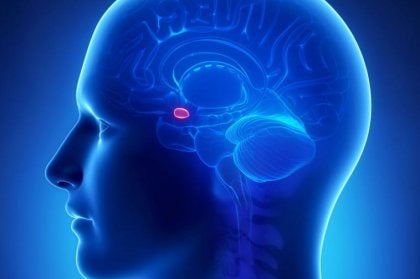(Exploring Your Mind) The neuroscience of revenge explains why some people don’t move on after a disappointment, a rejection, or what they interpret as injustice. They basically feed the hatred until they plan a way to strike back. Thus, instead of controlling their anger, rationalizing it, or using adequate self-regulatory mechanisms, they allow the discomfort to become chronic.
Related Millions of Patriots Sign Petition to ‘Recount the Election’ Due to ‘Lack of Transparency’
by Staff Writer, November 10th, 2020
Talking about revenge can be complicated, making it difficult not to go into ethical, moral, and even legal aspects. In fact, a perpetrator must face the consequences of their punishable action. However, in that case, legal authorities must intervene, and never with violence. In today’s article, we focus more on the neurological and psychological aspects of revenge.
Ted Bundy’s thirst for revenge
Here’s an example. If you’re into criminal literature, the name Ted Bundy might ring a bell. He was one of the worst serial killers in history. To this day, the exact number of victims he murdered remains a mystery. After a series of interviews and psychological and neurological tests, experts found more than just a psychopathic personality.
Bundy killed many young women during his years-long desire for revenge. The triggering factor of his behavior was the fact that his emotional partner had abandoned him. That rejection fueled an inordinate and almost savage rage in him. This led him to search for victims with the same physical traits as the woman who had left him.
Evidently, revenge is an aggressive and brutal mechanism that certain people have. To date, neuroscientists have already discovered the mechanisms and brain areas that regulate this type of drive. Needless to say, the data on the subject is incredibly interesting and revealing.
“Farewell to kindness, humanity and gratitude. I have substituted myself for Providence in rewarding the good; may the God of vengeance now yield me His place to punish the wicked.”
-Alexandre Dumas, The Count of Monte Cristo–

The neuroscience of revenge
“If you wrong us, shall we not revenge?” said Shakespeare in one of his plays. Everyone at some point in their life has experienced that same feeling. After suffering an offense, it’s almost inevitable not to want the other person to suffer the same way. Feeling this way is neurologically and emotionally normal.
However, most people will reflect on the situation and manage their emotions properly, hold back their rage, and then move on. This last process, the one that makes the desire for revenge go away, happens in the cerebral cortex, more specifically in the dorsolateral prefrontal cortex, where self-control processes are present.
But what happens in the brain of people with a vengeful personality?
The wound of rejection and injustice
The University of Geneva conducted an interesting study in 2018. Thanks to it, the neuroscience of revenge now has very solid evidence of some very striking aspects.
- Normally, when talking about this type of behavior, it’s common to refer to anger and rage processes. But what causes these emotions to appear? The trigger for most acts of revenge seems to be rejection.
- Rejection is that anguished feeling when someone is separated from something that was meaningful to them. It can be a partner, a job, family, friends, or something that the person deems as “justice”. This can feel as if society itself is failing them.

Where does the drive for revenge originate?
Dr. Olga Klimecki-Lenz, a researcher at the Swiss Center for Affective Sciences in Switzerland (CISA), located the brain area where vengeful feelings originate.
- The structure that activates anger is the amygdala.
- Thanks to a series of tests, it’s possible to see how this small structure is activated when there’s confrontation, deception, or the pain of rejection.
- It’s worth noting that the first emotion to appear is fear.
- The feeling of security and trust disappears, and fear instantly comes in. After this, anger and the urge to execute punishment start to escalate.
- Punishment is a reward system. In other words, the person can feel “pleasure” in taking revenge and applying the same suffering they went through.
- On the other hand, the superior temporal gyrus works alongside the amygdala. These two areas intensify the need to shape a vengeful act. But the most interesting thing happens right after.
- When these two structures activate, prominent activity soon arises in the dorsolateral prefrontal cortex in order to appease emotional intensity and promote self-control.
This last aspect undoubtedly opens up the interesting possibility of reducing violent and retaliatory behavior through magnetic stimulation. However, aggressive behaviors, such as that of serial killer Ted Bundy, depends on many other factors that the neuroscience of revenge simply can’t explain.
The fascination with the psychology of revenge
From a cultural and even psychological standpoint, revenge is quite an interesting dimension. Masterpieces such as Alexander Dumas’ The Count of Monte Cristo show that revenge is best served cold and it can take years to execute. Nonetheless, it’s important not to overlook the essential aspect of it: there’s always a lack of empathy. This is a fact that scientists such as Kevin M. Carlsmith, Timothy D. Wilson, and Daniel T. Gilbert were able to demonstrate.
Furthermore, those who feel the constant need to make others pay for what they consider an “injustice”, follow a pattern of narcissism, insecurity, trouble managing their emotions, inability to forgive, and lack of empathy.
To conclude, it’s worth reflecting on a very simple idea: everyone at some point has felt the desire for revenge. It’s the decision to remain calm and trying to move on what makes you a kind human.
“Weak people revenge. Strong people forgive. Intelligent people ignore.”
-Albert Einstein-
Stillness in the Storm Editor: Why did we post this?
The news is important to all people because it is where we come to know new things about the world, which leads to the development of more life goals that lead to life wisdom. The news also serves as a social connection tool, as we tend to relate to those who know about and believe the things we do. With the power of an open truth-seeking mind in hand, the individual can grow wise and the collective can prosper.
– Justin
Not sure how to make sense of this? Want to learn how to discern like a pro? Read this essential guide to discernment, analysis of claims, and understanding the truth in a world of deception: 4 Key Steps of Discernment – Advanced Truth-Seeking Tools.
Stillness in the Storm Editor’s note: Did you find a spelling error or grammatical mistake? Send an email to [email protected], with the error and suggested correction, along with the headline and url. Do you think this article needs an update? Or do you just have some feedback? Send us an email at [email protected]. Thank you for reading.
Source:
https://exploringyourmind.com/the-neuroscience-of-revenge/

Leave a Reply